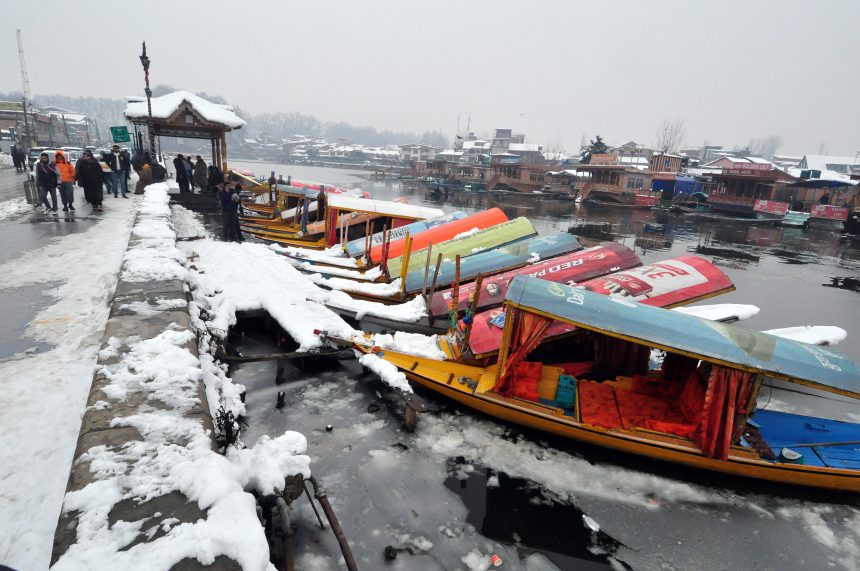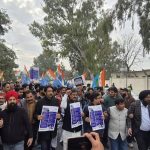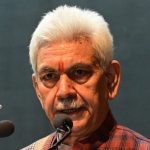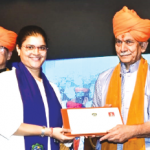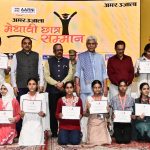As the winter chill deepens across Kashmir, the 40-day period of Chillai-Kalan casts its icy embrace over the region. Starts each year on December 21, this harshest phase of winter has been an integral part of Kashmir’s cultural and social fabric for over a thousand years.
Today, while modern gadgets and changing weather patterns have reshaped winter life, the traditions, stories, and memories of this season continue to define the soul of Kashmir, offering a glimpse into a time when winters were both harsh and heartwarming.
Noted poet and historian Zareef Ahmad Zareef says, in the past ‘Chillai-Kalan’ was not a burden on people. He said people used to visit Harissa shops and sit in Hamams to celebrate the season.
Zareef told Rising Kashmir that Chillai-Kalan has its own history of more than 1000 years and the people of Kashmir would traditionally welcome the season and stay inside their homes during this harsh winter period.
He said that in the old city, most people were artisans and would often stay inside homes during the period, while in villages people would be rearing sheep, weaving carpets, and doing other handloom work, he said.
“People would celebrate this season as they were mostly self-sufficient and were not dependent on anyone like the present society. There were fewer infections, and diseases as people would often eat as per the weather conditions,” he said.
Zareef said people in Srinagar would often visit Harissa shops, Hamams and during nights poets would often narrate their poetry in closed rooms. Tea and Kehwa were served at these small parties.
He said even before 50 years, there were four Harsisha shops famous in Srinagar. In Downtown, it was in Aali Kadal, Saraf Kadal, and Fateh Kadal, while in the upper city it was Saribal and other parts.
The noted Kashmiri poet said “Chillai Kalan is the period when Harissa-gaers (Harissa-Makers) do brisk business. People line up at the crack of dawn in freezing temperatures for the hot dish at traditional shops,” he said.
Zareef says as Islam spread in the valley and their ancestors from Iran started calling this 40-day harsh winter period Chillai Kalan instead of ‘Sishshar Mass’ previously used by Buddhists.
In Persian tradition, the night of December 21, the longest of the year, is celebrated as Shab-e-Yalda (night of birth) or Shab-e-Chelleh.
He said “Kashmir has a deep influence on Iran, it is also called small ‘Iran of Asia’ (Iran-i-Sageer) as the Valley has a deep connection both traditionally and religiously with its culture and traditions.
Zareef said Chillai Kalan is a Persian term in which Chilla means 40 days and Kalan means bigger.
“In the past, people were preparing in late summer months for harsh winters in advance to remain self-sufficient. There was a special space called ‘Wagga’ in every house for drying the vegetables, fishes, and pulses in the sunshine,” he said.
Recalling his childhood, he said that he had witnessed snowfall up to two storeys of his house. People from Dal interiors would come and lay down the snow from rooftops,” he said.
Zareef said that there used to be 3 to 4 feet deep snowfall in Srinagar and even more in the higher reaches. “The architecture of homes back then was much more suitable to face this winter period,” he said.
Zareef said Kangri ( firepot) and Hamaams were the main sources of warmth during the winters. People in upper reaches would burn firewood in their mud houses, he said.
“Now the situation has changed as the atmosphere due to climatic change and modern gadgets replaced traditional Kangri and other systems. History of Chillai Kalan has now remained a folk tale for our new generation,” he said.
Sitting with her Hookah, topped by a Pheran (a traditional knee-length cloak along with Kangri, a 70-year Fatima Begum from north Kashmir’s Pattan says that they used to celebrate the Chillai Kalan and due to heavy snowfall people would usually stay inside their homes.
Mostly in Villages, people would remain busy with preparing Wagoo—local reed mat or making Patig (made from paddy grass). People would enjoy and share the joy of the season. We would mostly eat dried vegetables the whole winter,” she said.
From early September, people across Kashmir, especially women, would dry different kinds of vegetables for the winter season. The dried vegetables have a unique taste and are used during harsh winter months.
Recalling her childhood, she said she along with her friends would often go out for snow skiing on high slopes in nearby hills where polythene or fertilizers bags were used for the same.
“Children would play Sheen-Jung (snowballs) and Sheshergant (Icicles) were used as swords in the traditional games,” Begum said.
The elderly Begum says if there would be any function in the village during Chilai Kalan, it was celebrated more than anything.
She says rich people in the Villages would often invite Kitabkhanas during snowy nights. They would mesmerize their families with folk tales from their story collections. It was the tradition that is nowhere these days.
We used to roast potatoes in Kangri for the children and as it had high nutritious value,” she said.
Abdul Majeed Rather, a 60-year-old from HMT Srinagar says with the onset of winter in Kashmir, people used to gear up with the Chalai-Kalan preparations.
According to the old Kashmiri calendar, the Great Winter begins on 6 or 7 Poh which corresponds to 21 or 22 December. The 12 months of the Kashmiri calendar include Tsithur, Vahekh, Zeth, Har, Shravun, Badrupeth, Ashid, Kartikh, Monjhor, Poh, Maag, and Phagun.




